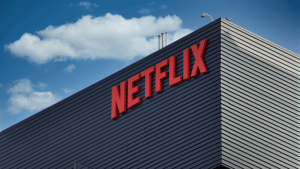As digital advertising continues to evolve, how do you deliver on the promise of programmatic? Columnist Peter Minnium has tips.

As an ad industry veteran with the gray hair to prove it, I sometimes find myself discussing the industry with other long-time pros. The other day, an acquaintance who leads one of the United States’ largest agencies was reminiscing about when he started in the business — not quite “Mad Men” days, but the late ’80s.
Afterwards, a digital advertising friend commented on how sad it was that our colleague “wished it was still the good ol’ days.”
I shocked her by saying, “Who doesn’t!?” After all, before digital advertising, we lived in a linear media world in which marketers and publishers were in control, leading consumers as effectively as the Pied Piper with his magic pipe. That was the pinnacle of analog advertising, a time in which professionals practiced a perfected craft and were richly rewarded for it.
Then, the world changed.
A New Dialogue Between Marketers And Consumers
Today, digital media and advertising has enabled a level of interaction and dialogue between marketers and consumers whereby the two are becoming equal partners in the advertising experience, often co-creating the meaning of the brand. Marketers are absolutely not in control and, in many cases, are not only not in the lead, but are actively following behind the consumer.
This sort of transition is not entirely new. Advertising in every new medium begins as an awkward accompaniment and, over time, matures and takes on a more natural form, fitting more comfortably within the content.
Early TV commercials featured nattily dressed radio announcers reading copy to the camera. It took many years for television advertising to find its natural form of mini 30-second stories within the broader program stories. Similarly, early magazine ads were stacked at the back of the book and only became integrated between stories and reflective of the publications’ look and feel over time.
The one-dimensional flash digital banners that have dominated the Web for its first 20 years are the equivalent of TV’s and magazine’s pre-adolescent forms. For the most part, these have been out of the reader’s activity stream, not mindful of the page content or style, not as interactive as the surrounding content, and most damningly for digital, they have failed to use data and technology to tailor the message to the reader.
“Brands too often are still serving 1990s-style ads with 2015 technology,” Diaz Nesamoney, author of “Personalized Digital Advertising: How Data and Technology Are Transforming How We Market,” told me. “Today, the capabilities exist to raise programmatic media to its full potential with tech-enabled creative — digital ads that pivot away from traditional banners and restrictive ad formats to become data-driven, dynamic canvases.”
Moving digital advertising out of its adolescent growth phase and delivering this promise requires mastering five principles:
1. Lead With Great Content
The world’s most valuable brands have great assets, but that is not what makes them stand apart. They maintain their premium position based on what people believe — and beliefs are created by compelling ideas.
Great idea-led content, whether brand content or promotional advertising, has an enormous head start in building audiences and fans, while that of inferior quality is hamstrung from the start.

Inferior Quality Content Will Fail, Programmatic or Not
Data and technology are a complement to, not a replacement for, idea-led content.
2. Build An Ad System, Not A Campaign
Digital has significantly advanced our ability to build brands, but it has also made it more complicated.
In the days of analog communication, available media limited agencies to telling stories in a strictly linear form. This appealed to the left side of the brain, which processes information sequentially.
Digital media, in contrast, liberates creativity from the confines of a single dimension, allowing for nearly limitless simultaneous forms of communication in a nonlinear form. This approach appeals more to the right side of the brain, which processes stimuli holistically.
Telling stories remains key, but today, the winners are those who do so in more than just a linear fashion. In literature, the term “disruptive narrative” is used to capture this technique, while SapientNitro calls it “Storyscaping“; the Martin Agency, “storybuilding“; and R/GA, “whole ideas.”
From a practical point of view, this means that campaigns today are sets of creative assets that work together as a unified whole — an ad system.

“As we quickly pivot toward a marketing reality where attention has emerged as a critical yet increasingly scarce natural resource,” Gian LaVecchia, managing partner, Digital Content at MEC, states in Ad Age, “we need to evolve our thinking toward a more ambitious construct, one that embraces multi-layered narratives and experiences that develop over time, designed for multiple screens and feeds, and socially engineered for the participation generation.”
3. Make The Creative Responsive And Dynamic
We will soon live in a world where viewers do not distinguish between screens, simply expecting their desired content to be available on whatever one they are currently facing. When content is fluid across screens, so too must be digital advertising. “Responsive” is how the industry characterizes this ability to scale across screens, and the IAB (disclosure: my employer) is hard at work on a set of Flex Ad Standards to enable the industry to do this efficiently.
Programmatic is making dynamic media a reality, with individual ad placements chosen based on an avalanche of data. To date, data has been mostly used to inform the media components of the ad, seldom to make truly dynamic ads.
“The ad location may be smart, but the content probably isn’t,” Michael Lowenstern, VP of Digital Advertising at R/GA, reflects on AdExchanger. “The data that informs the site placement itself only takes us halfway to relevance. The content of the ad should use the same target data for it to be wholly relevant. The content is what makes the ad personal, makes it memorable.” IAB plans to release Dynamic Ad Standards at the turn of 2016 to help the industry do this broadly.
4. Embrace Automation, Data And Technology
“What got you here won’t get you there,” is how Cary Tilds, GroupM’s chief innovation officer, sums up the critical need to use today’s best and brightest technology and technologists to deliver the ads of tomorrow. “How we get messaging in media on the next billion or 10 billion screens will not be the same as the first billion screens. The game has changed,” she explained to me.
As an industry, we are not there yet. But the rise of programmatic technologies and, in particular, ad tech’s embracement of the creative half of the ad equation continue to yield promising green shoots.
5. Rinse And Repeat
Getting this right is an enormous, iterative challenge. Just as today’s leaders stand on the shoulders of (May 04, 2015)’s Dynamic Creative Optimization pioneers, so too will tomorrow’s solutions owe their success to today’s experimentation.
The good news is that the digital ecosystem has the capacity to meet this challenge. Marketers’ ability to create distinct commercial options and brand messages — and agencies’ ability to create matching content assets — is catching up with ad tech’s accelerating ability to produce, target, render, and serve dynamic creative.
The industry is finally beginning to realize its potential to deliver the long-promised, but rarely achieved “right ad to the right person at the right time.”
And that’s worth giving up “the good ol’ days” for.
Some opinions expressed in this article may be those of a guest author and not necessarily Marketing Land. Staff authors are listed here.
(Some images used under license from Shutterstock.com.)
Marketing Land – Internet Marketing News, Strategies & Tips
(259)
Report Post






